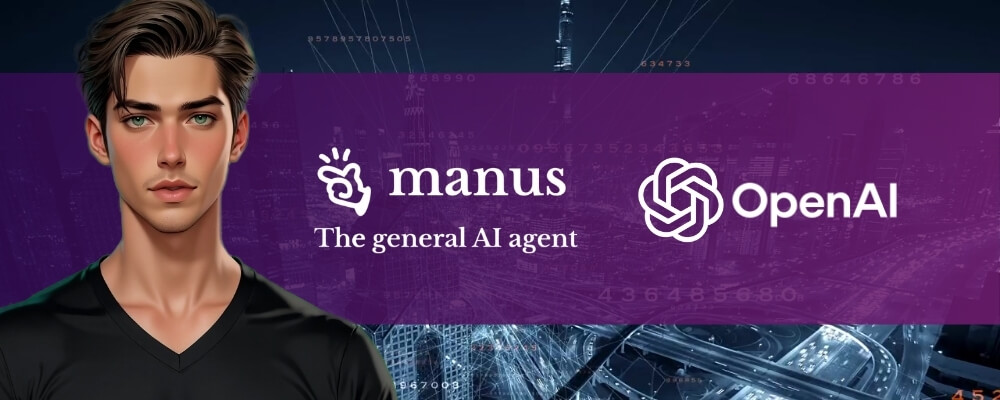In today’s rapidly evolving AI landscape, groundbreaking research and innovative developments are reshaping the future of technology. In this comprehensive report, we dive into three pivotal topics making waves in the industry: the strategic blueprint for superintelligence, the unveiling of Manus AI as a trailblazer in autonomous AI agents, and the contentious reception of OpenAI’s GPT-4.5. Watch our in-depth video analysis below for an engaging visual breakdown of these advancements.
A New Era in Superintelligence Strategy
Recent discussions among leading experts have centered on a provocative paper titled “Superintelligence Strategy: Overview and Implications.” This influential document, penned by prominent figures such as Dan Hendrick, Eric Schmidt, and Alexander Wang, draws parallels between the emerging AI race and historical milestones like the Manhattan Project. The report outlines a three-pronged strategy to navigate the high-stakes world of superintelligence:
- Deterrence through “Mutual Assured AI Malfunction” (MIM):This concept suggests that any unilateral attempt by a nation to dominate AI should be met with pre-emptive countermeasures-ranging from cyber espionage to kinetic responses-to prevent the formation of dangerous monopolies.
- Competitiveness and Economic Implications:The paper emphasizes the need for nations, particularly democratic ones, to lead AI development under the banner of core values such as freedom and human rights. It highlights the role of critical assets like AI chips (with Taiwan playing a key role in production) and the integration of AI into military strategies, underscoring the balance between technological progress and national security.
- Nonproliferation and International Cooperation:While competition is inevitable, the authors advocate for international dialogue and coordinated safety measures to ensure that AI benefits can be harnessed without triggering global conflicts.
This strategic framework is not just a theoretical exercise; it reflects the intensifying geopolitical rivalry in AI-a competition that could redefine global power structures. []

AI Network News – Manus The General AI Agent
Manus AI: Pioneering Autonomous AI Agents
In a stunning display of technological prowess, Manus AI has emerged as what many are calling the world’s first truly autonomous AI agent. Early tests and demonstrations reveal that Manus AI is far more than a mere chatbot. Instead, it embodies a multi-agent architecture where specialized sub-agents operate under a central executive module to manage complex, multi-layered tasks.
Key Highlights from the Manus AI Demonstration
- Research and Website Development:Manus AI was tasked with researching recent AI-generated video games and developing a website with a nostalgic ’90s video game aesthetic. The system efficiently broke down the assignment into manageable subtasks, aggregated relevant content from various online sources, and delivered a live, polished website complete with creator bios and resource links.
- Coding and Linux Integration:Beyond research, Manus AI demonstrated robust coding abilities by setting up a Linux environment from scratch. It automated terminal commands, managed virtual environments, and even initiated Git repositories-all while offering detailed instructions that make technical processes accessible to beginners.
- Gaming and Multimedia Projects:Pushing its creative limits, Manus AI developed a World War II fighter plane game complete with dynamic environments, realistic visual effects, and interactive gameplay. Despite encountering minor issues with multimedia API integrations (such as voiceovers and video avatars), the system’s overall performance was nothing short of revolutionary.
The hands-on experience with Manus AI has left industry experts and early adopters impressed by its ability to integrate cutting-edge research and web technologies, promising to reshape fields as diverse as web development, game design, and digital education. []
OpenAI’s GPT-4.5: Ambition Meets Criticism
In contrast to the breakthrough performance of Manus AI, OpenAI’s latest release-GPT-4.5-has sparked significant debate among users and experts alike. Launched on February 27, 2025, GPT-4.5 was heralded as OpenAI’s most advanced language model, boasting improvements in world knowledge, emotional intelligence, and a reduced hallucination rate. However, reality has not quite lived up to the hype.
What’s Fueling the Discontent?
- Marginal Performance Gains vs. Exorbitant Costs:Despite claims of enhanced capabilities, GPT-4.5’s improvements appear modest when compared to its predecessor, GPT-4o. The model comes with a steep price tag-$75 per million input tokens and $150 per million output tokens via the API-which has led to widespread frustration among developers and end-users. Many have described the new pricing as a barrier, especially when the performance does not justify the increased expense.
- Technical Shortcomings in Key Areas:GPT-4.5 has shown impressive results in select benchmarks, yet it notably falls short in tasks that require deep analytical reasoning and advanced problem-solving-areas where previous models excelled. Its inability to deliver on coding applications and complex reasoning tasks has left many in the technical community questioning whether OpenAI has strayed from its core strengths.
- A Shift in Priorities:Some analysts believe that OpenAI’s focus on enhancing conversational charm and emotional intelligence may have come at the cost of practical performance improvements. This pivot, possibly aimed at appealing to a broader enterprise audience, risks alienating the developer community that has been a cornerstone of OpenAI’s success.
Overall, while GPT-4.5 might offer a “thoughtful” chat experience for creative tasks, its performance pitfalls and high cost have resulted in a growing chorus of disappointment from those who expected a revolutionary leap. []
Integrating the Developments: What’s Next for AI?
The convergence of these three groundbreaking reports paints a vivid picture of the current state and future trajectory of artificial intelligence:
- Strategic Considerations:The superintelligence strategy paper underscores the high-stakes geopolitical and economic dimensions of AI development. Nations are already positioning themselves in a race where technology, security, and global influence are intertwined.
- Technological Breakthroughs:Manus AI demonstrates that the next generation of AI agents is not just about incremental improvements-it’s about creating systems capable of autonomous decision-making, complex project management, and seamless integration across digital platforms.
- Market Realities and User Expectations:Meanwhile, the mixed reception of GPT-4.5 serves as a cautionary tale that not every new release will meet the sky-high expectations set by previous milestones. As the industry matures, balancing innovation with practicality remains a formidable challenge.
These insights highlight an industry at a crossroads, where rapid advancements are met with equally significant challenges. Stakeholders must navigate this evolving landscape with strategies that prioritize both groundbreaking innovation and robust safeguards.
Conclusion
As the race for AI supremacy intensifies, the discussions around superintelligence strategy, autonomous agents like Manus AI, and the real-world impact of models like GPT-4.5 are more relevant than ever. AI Network News remains committed to delivering in-depth analysis and up-to-date coverage on these transformative developments.
What do you think about the current state of AI? Can strategic policies, innovative autonomous systems, and high-performing language models coexist to create a safer and more productive future? Share your thoughts in the comments and join the conversation on the future of artificial intelligence.
Stay tuned to AI Network News for more insights and updates as we continue to cover the breakthroughs and challenges that will shape the next era of technology.

